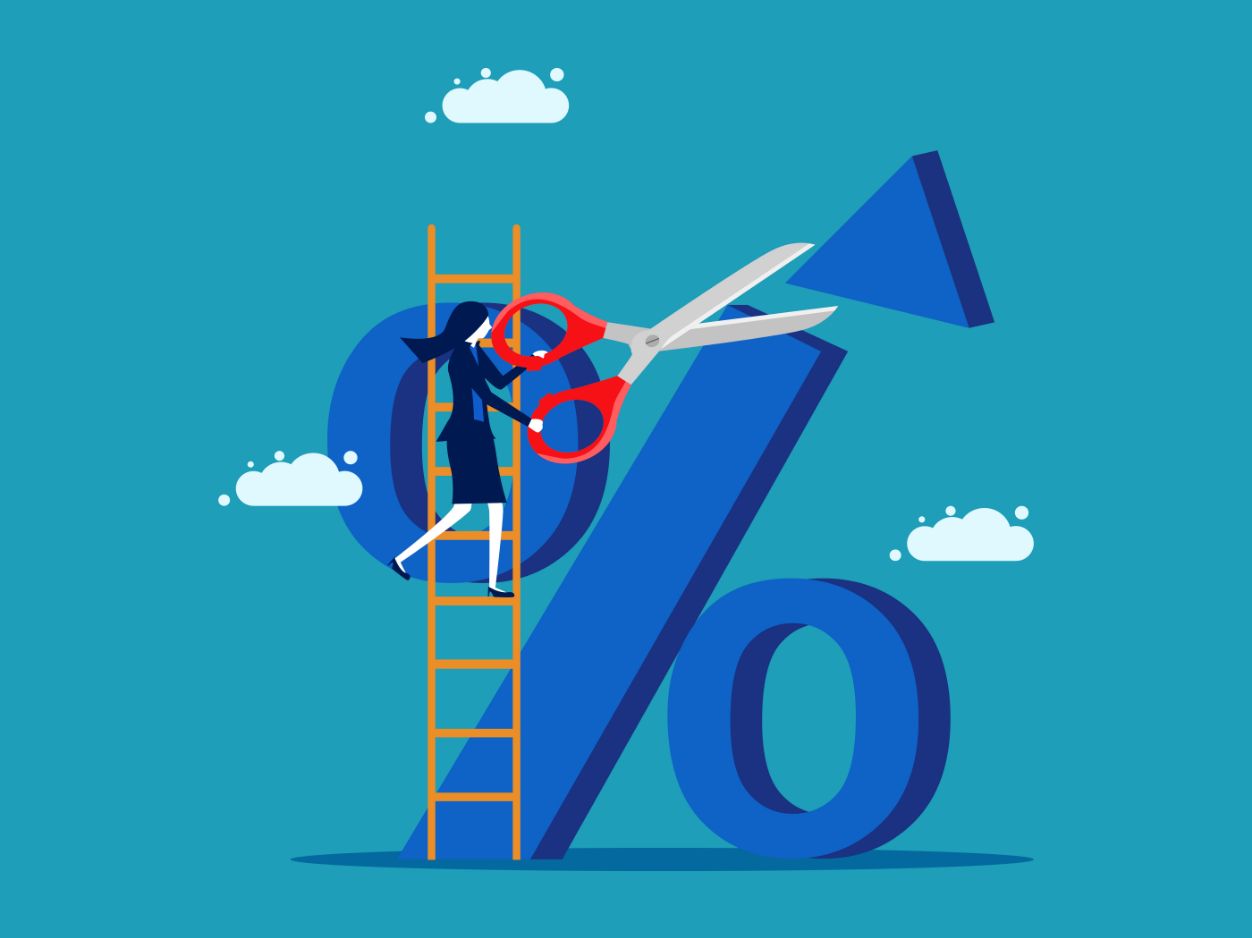On February 1st, 2023, the U.S. central bank raised its Federal Funds Rate, which indirectly affects interest rates, including mortgage rates, by 25 basis points (from 4.5% to 4.75%). For real estate investors and agents, this begs an important question:
Will mortgage rates continue to rise in 2023, or will they decrease?
In 2020 and 2021, we saw record-low mortgage rates of around 3%. In fact, in January 2021, the average 30-year fixed rate mortgage rate hit an all-time low of just 2.65%!
Since then, inflation has caused mortgage rates to skyrocket. In 2022, mortgage rates more than doubled from what they were in 2021, topping 7% in November. Though mortgage rates have relaxed somewhat, we still see relatively high mortgage rates of over 6% (as of February 2022).
In this article, we’ll go over different scenarios in which mortgage rates could go up or down in 2023, giving you a better idea of what to expect.
Table of Contents
How Mortgage Rates Could Increase

One way mortgage rates could keep going up in 2023 is if the Fed continues to raise interest rates.
Case in point: After the Federal Reserve’s rate hike on February 1st, mortgage rates increased slightly. The average rate on 30-year mortgages went up from 6.27% in the second week of February to 6.44% in the third week.
Why the Fed May Raise Interest Rates
Why would the Fed continue to raise interest rates? To combat inflation, which rose rapidly in 2021 and 2022.
By raising interest rates, the Fed makes it more expensive to borrow money, causing consumers to spend less. When consumers spend less, there’s less money circulating in the economy, and prices tend to rise less rapidly as a result.
So if the Fed continues to raise interest rates to fight inflation as it has eight times since March 17, 2022, mortgage rates may continue to go up.
Inflation's Impact on Interest Rates
Whether or not the Fed will do this, however, depends heavily on if it can get inflation under control.
Since it started hiking interest rates last year, inflation rates have been coming down. However, they are still above 6%, which is much higher than the Fed’s target inflation rate of 2%. “While recent developments are encouraging, we will need substantially more evidence to be confident that inflation is on a sustained downward path,” said Fed Chairman Jerome Powell. As a result, “ongoing increases in the target range” are still expected.
So, unless inflation rates significantly fall, there’s a good chance that interest rates (including mortgage rates) will remain high.
Unexpected Market Shock
Another reason mortgage rates could go up is an unexpected market shock.
After all, much of the recent interest rate volatility has resulted from COVID-19 and other international events and conflicts that impact supply chains.
How Mortgage Rates Could Decrease

Now that we’ve covered some possible scenarios in which mortgage rates could go up in 2023, let’s review some potential reasons they could come down.
Inflation Trends
For one, U.S. inflation has followed an overall downward trend since last summer.
If this trend continues, it may lead the Fed to stop raising interest rates, and mortgage rates could start coming down as a result. That said, the Federal Funds Rate doesn’t directly control mortgage rates. Mortgage rates are more closely tied to the 10-year treasury bond, which is a type of government debt security.
10-Year Treasury Bond
To understand why the 10-year treasury bond is closely tied to mortgage rates, imagine you are a bank.
You can lend money to the government by buying bonds, and you can lend money to individuals and businesses, often in the form of mortgages. Because the U.S. government has yet to default on any of its debts, bonds carry virtually zero risk.
In contrast, homeowners sometimes default on their mortgages. To help compensate for the relatively higher risk, you would want to charge mortgage interest rates that are higher than whatever the yield on the 10-year treasury bond is (as of February 16, 2022, it was 3.864%). This is why the spread between the 10-year treasury bond yield and mortgage rates usually sits around 1.5 to 2 percentage points.
Here’s why this matters: If the yield on the 10-year treasury bond starts to fall, mortgage rates would likely follow suit.
Could the yield on the 10-year treasury bond start to fall in 2023? Possibly. The Fed’s interest rate hikes, though helpful in fighting inflation, could also discourage investment, which could, in turn, slow down the economy and even trigger a recession.
If that happens, demand for low-risk investments like the 10-year treasury bond may increase. Why? Because people tend to favor more conservative investments in times of economic uncertainty. The increased demand would then drive up bond prices, and since bond prices and bond yields are inversely related, this would also drive down bond yields.
Less Demand for Mortgage Financing
Another reason mortgage rates could fall is that there tends to be less demand for mortgage financing during recessions. With falling mortgage demand comes lower mortgage prices (i.e., mortgage rates).
It’s also important to note that the spread between the 10-year treasury bond yield and mortgage rates is unusually wide. As of February 16, 2023, it was nearly 292 basis points (2.92 percentage points). According to Freddie Mac, this is largely a result of the mortgage industry adjusting to “dramatically lower transaction activity and interest rate volatility.” That means if interest rates start normalizing, the spread could narrow, bringing mortgage rates down even further.
The Final Verdict
Most experts expect that 2023 mortgage rates will decline modestly to around 5-6%.
While the real estate market adjusts to this position, you may need to re-adjust your approach as a real estate professional. Since people will always need a place to live (it may just involve some re-organizing if they’re in a compromising financial situation), there will always be deals and listings hiding in your local market.
With a data tool like PropStream, you can find these hidden opportunities and make 2023 your best year yet.
Start finding these opportunities by taking advantage of our free 7-day trial today!
Psst! Each 7-day trial includes 50 free leads.
